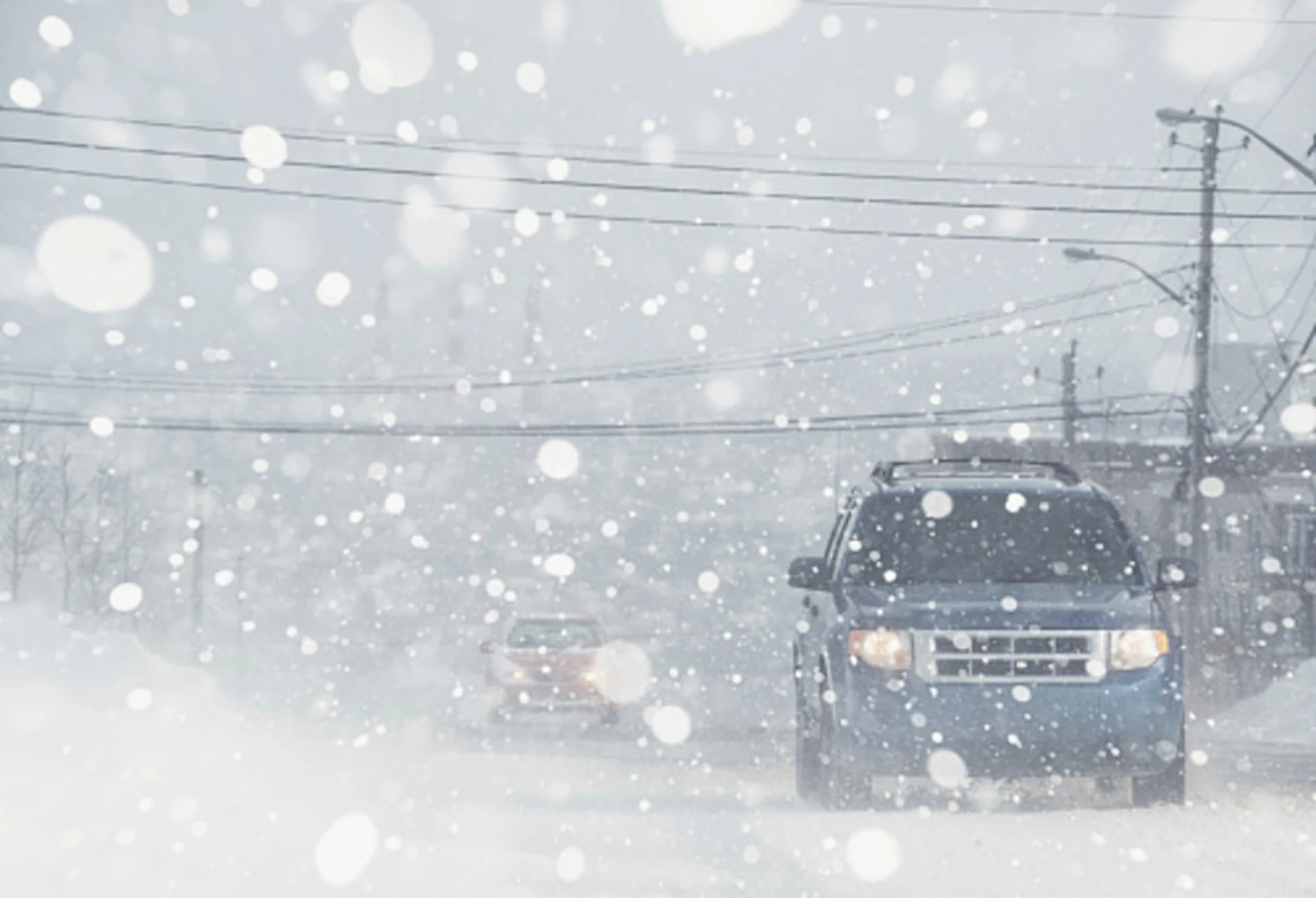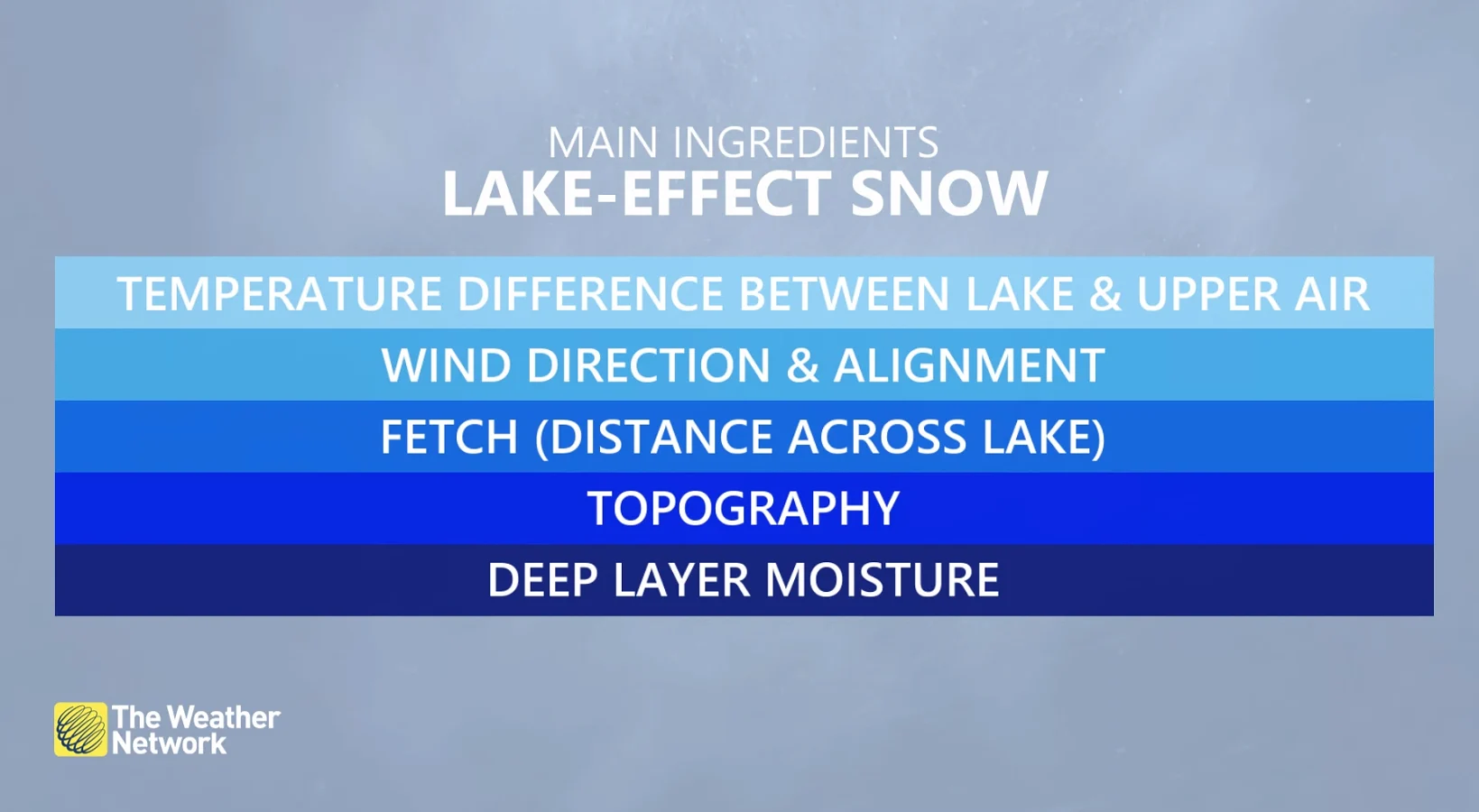
How the Great Lakes influence fall and winter weather in Ontario
The Weather Network's Mark Robinson examines the role water temperatures in the Great Lakes play in weather systems during fall and winter.
The lake felt warm—almost bath water warm—as Dave Sills and I walked through the shallows at my cottage. It wasn’t a big lake, so I wasn’t expecting it to be ice cold at the end of August, but at the same time, I’d been swimming at the cottage since I was a little kid, and this felt warmer than I’d ever felt. My mind immediately went to thunderstorms; if this lake was so warm and we’re surrounded by the Great Lakes in Ontario, those must also be warm, so how long were thunderstorms going to stick around this year?
Given that Dave is one of Canada’s top thunderstorm scientists, I asked him what he was expecting for fall storms, given that I was so sure that the Great Lakes were a lot warmer than normal.
I was in for a bit of a surprise.
"The lake temperatures have a big effect on the weather in southern Ontario, but they might not be so important this year," said Dave. "I just checked the lake temperatures, and they’re now running pretty close to normal. They were a lot warmer in the spring thanks to the lack of ice cover from the winter, but now that we’ve had a relatively cool late summer, the water temperatures are back to average. The lake temperatures aren’t going to have much of an effect either way this year."
RELATED: The science behind Canada's 'classic' fall storms
While this was a bit of a disappointment to me given my love of thunderstorms, it’s good news for farmers and those who enjoy beautiful fall days. Warmer lakes mean that thunderstorms can pass over large bodies of water without losing too much strength. We’ve seen this exact scenario happen in past years, and it’s something that both Dave and I have been watching closely. Are we seeing an extension of the tornado season into the fall?
Dave’s answer? "We don’t have enough data yet, but it’s a good question. However, the one type of storm that we might be seeing more of if we have warm lakes is waterspouts. Warm lake waters with cool fall air masses moving over them mean lots of instability, and you get waterspouts."
RELATED: Why you can't rule out tornadoes during Ontario's cooler months

(Ingredients behind waterspout formations. The Weather Network)
While 'spouts aren’t usually much of a danger to land, they can pose a hazard to smaller boats on the Great Lakes in the fall. They form from a different process than supercell thunderstorms and generally have wind speeds not much more than 100 km/h. You can often see them form over the lake from places like Long Point on Lake Erie or Kingston on Lake Ontario.
Dave then used a dreaded phrase:
"If we don’t have ice forming, but we do have warm lakes over the winter, we’re going to get tons of lake effect snow. We saw a lot of that last winter. The lake effect snow just kept going and going and never really stopped until spring."
DON'T MISS: Why the Great Lakes produce some of the world’s heaviest snow
WATCH: How lake-effect snow forms over a warm lake
The extended lake effect season did bring one thing positive for me, at least: thundersnow. I still haven’t caught a full bolt while the snow is flying around me, and if the lake effect season got going with a vengeance, it might make up for the lack of fall thunderstorms.
Dave cautioned me not to expect that again.
"We’re not sure if the lake temperatures have anything to do with how much lightning is produced in winter storms," he said. "One thing that did have an effect last year was tall towers. If you get a system moving over or a squall over a tall building or wind turbines, they can initiate lightning. It seems to have a lot more to do with that than lake temperatures."

So, the bottom line for me was that it’s almost time to put away thunderstorm chasing gear and get out the squall chasing shovel. Of course, I’ll also be watching our TWN Fall Forecast (released on Sept. 22, 2023) to get an idea of when the waterspouts are going to start showing up. I’m going to pretend that winter isn’t on the way. Yet.
(Header image credit of Getty Images/shaunl. Creative #: 521998431)






